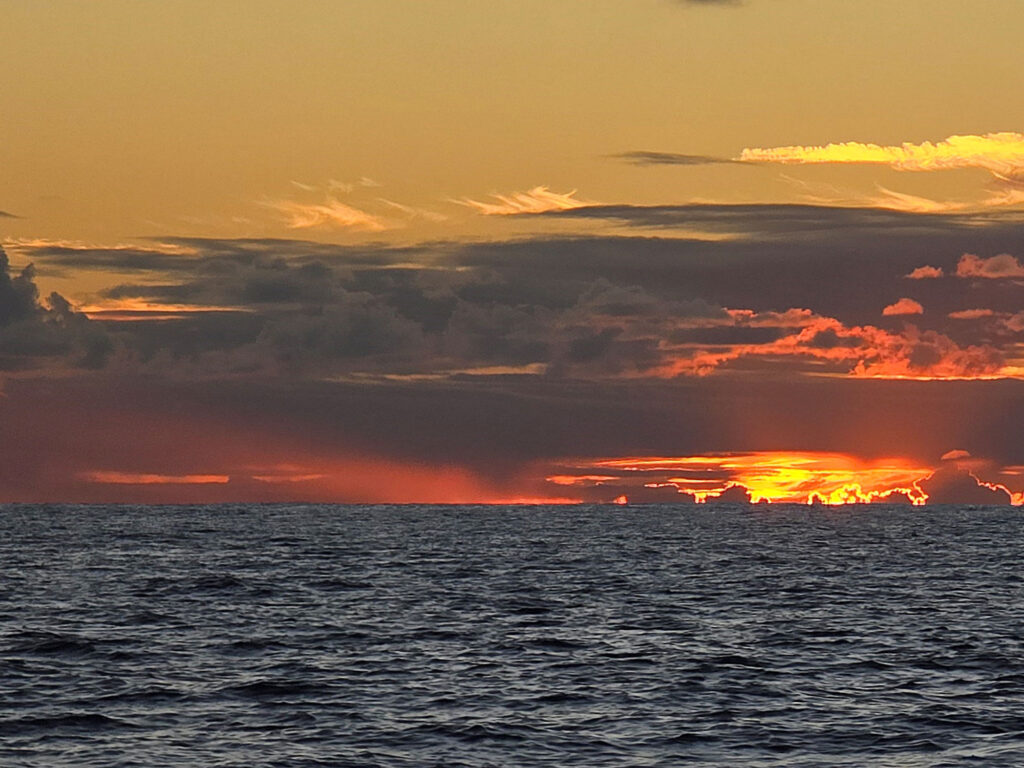
We’re currently at sea, with more than a thousand nautical miles from Hawai’i behind us, and more than a thousand ahead of us to our destination: Majuro, Marshall Islands. So far, this passage has reminded us how less-tangible skills can be as important to cruising as those you can learn in a seminar or class. Among the most useful of these skills is listening—not as in listening to your partner, co-captain or crew (although that’s important, too), rather, listening to your boat. It’s often trying to tell you something. For an explainer on this, jump to the video.
Years of learning Totem’s creaks and groans were put into practice this week. Jamie and I departed from Kona, Hawai’i on Monday, September 9, bound for the Marshall Islands. On our third day at sea, sailing downwind, wing-on-wing, in trade-wind conditions, we were bewildered by a mystery clunk from the rudder. We have always been aware of a “light” clunk, from the upper bearing at deck level, but this was a different sound. Different, in this situation, on a converging path with unsettling weather in the forecast, was not good.
Worst-Case Scenario
Rudder failure has the potential to be sudden and catastrophic. We imagined possibilities, thinking about “sound, bluewater boats” with capable crews who have had rapid, disastrous outcomes from rudder failure. Feeding our concern was that, some years ago, a sistership to Totem had a serious potential rudder problem. Heavy bronze bolts securing the bronze skeg to fiberglass began backing out. They were able to resolve it, but as we were underway gliding over the ocean floor 16,000 feet below, we couldn’t assess our clunk underway.
Anatomy of Totem’s Rudder
Totem‘s rudder has three bearings. The highest is at deck level. Below that, a second bearing lies where the rudder post passes through the hull at the bottom of the boat. These first two can be inspected to varying degrees from the lazarette while at sea. The third bearing is a gudgeon and pintle mechanism midway up the rudder securing it to the top of the bronze skeg. Halfway across the Pacific, this bearing could only be inspected with a swim.
The deck-level inspection we were able to conduct at sea gave us no cause for concern. The origin of the clunk must be coming from somewhere that we could only inspect by getting in the water, which wasn’t safe with 1.5-meter wind waves, plus a 2- to 3-meter (and occasionally 4- meter) swell from the north.
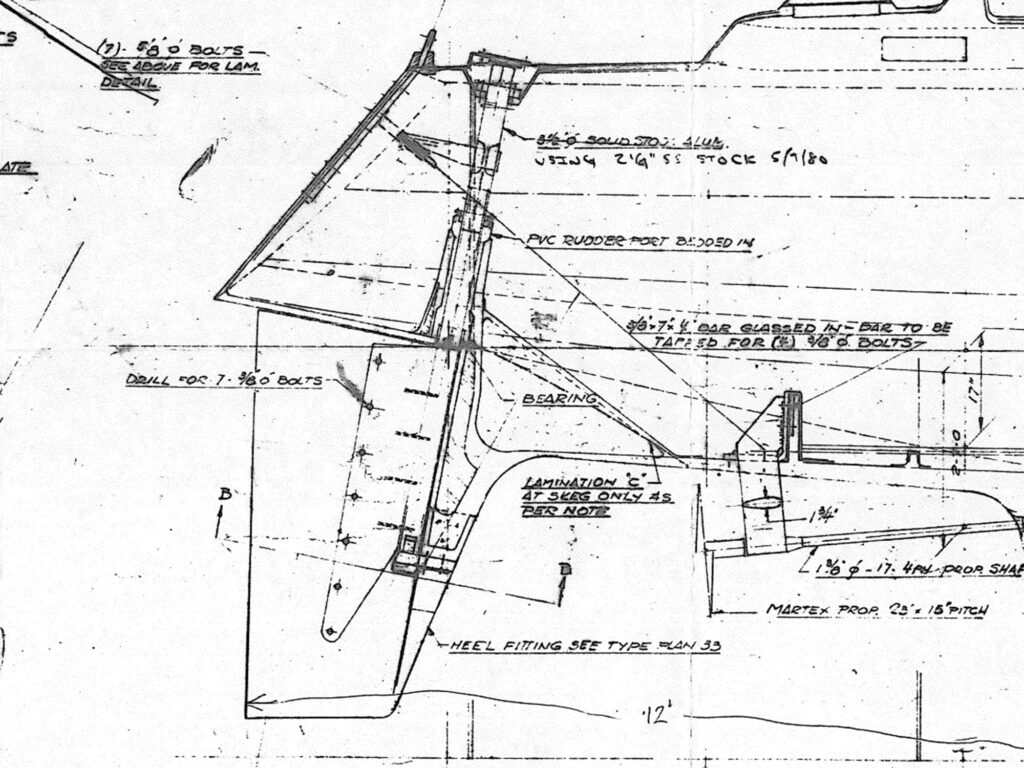
An Unplanned Pit Stop
As we considered our options, an interesting one emerged: a small, remote atoll that was 300 nm west of Totem at the time. With our onboard broadband from Starlink, we researched this option further, only to discover that “Johnston Atoll,” while a US territory, does not welcome visitors. It’s a military site, a former nuclear testing location, and a site used to incinerate and dump weapons. For the last couple of decades, it has also been a wildlife refuge managed by the U.S. Fish and Wildlife Service.
Nonetheless, I sent an email with fingers crossed and a queasy stomach. To our astonishment, within a matter of hours, we had traded several emails with the F&WS management, while looping in the US Coast Guard’s Joint Rescue Coordination Center (JRCC) in Honolulu to document the situation.
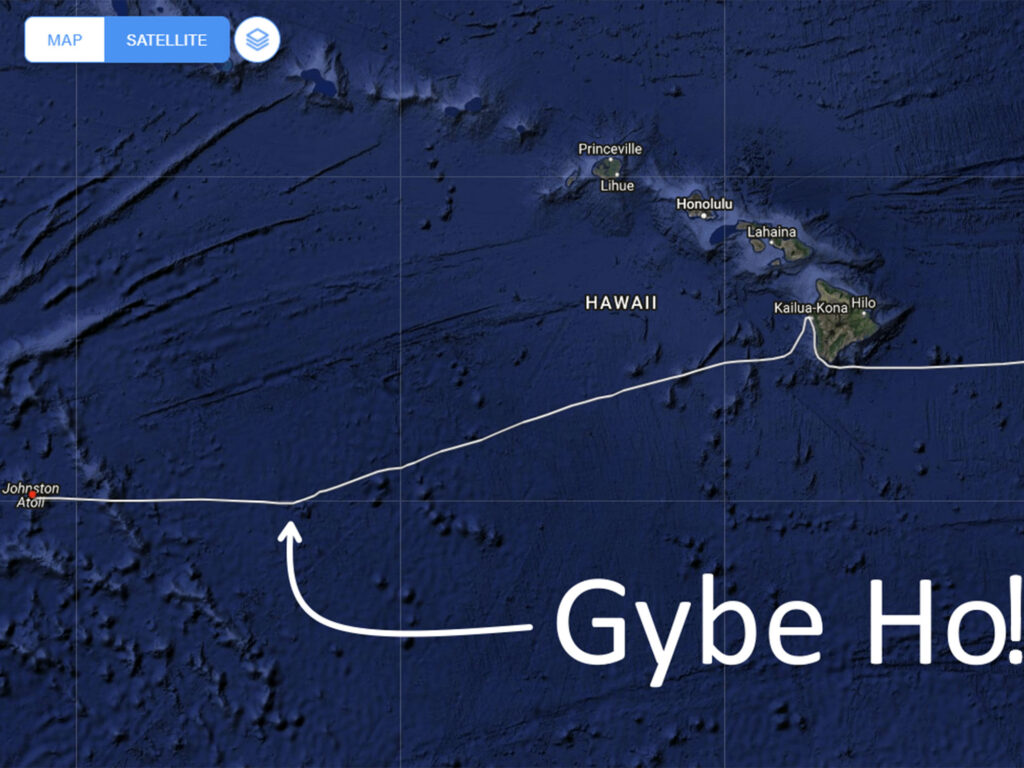
Were we prepared to declare an emergency? While establishing our needs, yet making it clear that we did not want any resources to be expended on our behalf, permission was granted for us to anchor for our inspection and any repairs that might be necessary. We received the official green light around midnight, and we waited for the relative safety of dawn to alter course with a gybe toward the atoll.
Inspecting the Rudder
We arrived at dusk—a move made possible courtesy of the arrow-straight, 500-foot wide channel blasted through coral by the military. We anchored and waited for the next morning to inspect the rudder. Once in the water Jamie was able reproduce the clunk. The lower bearing has play enough that slight rudder flex was enabling the pintle to bang against the gudgeon/bearing. Closer inspection revealed nothing bad. The skeg was as stout as when it was new (42 years ago). Although the play is new, roughly 3/16”, the hardware looked perfect. We found no compromised rudder integrity, but would rely on a second inspection to be sure.
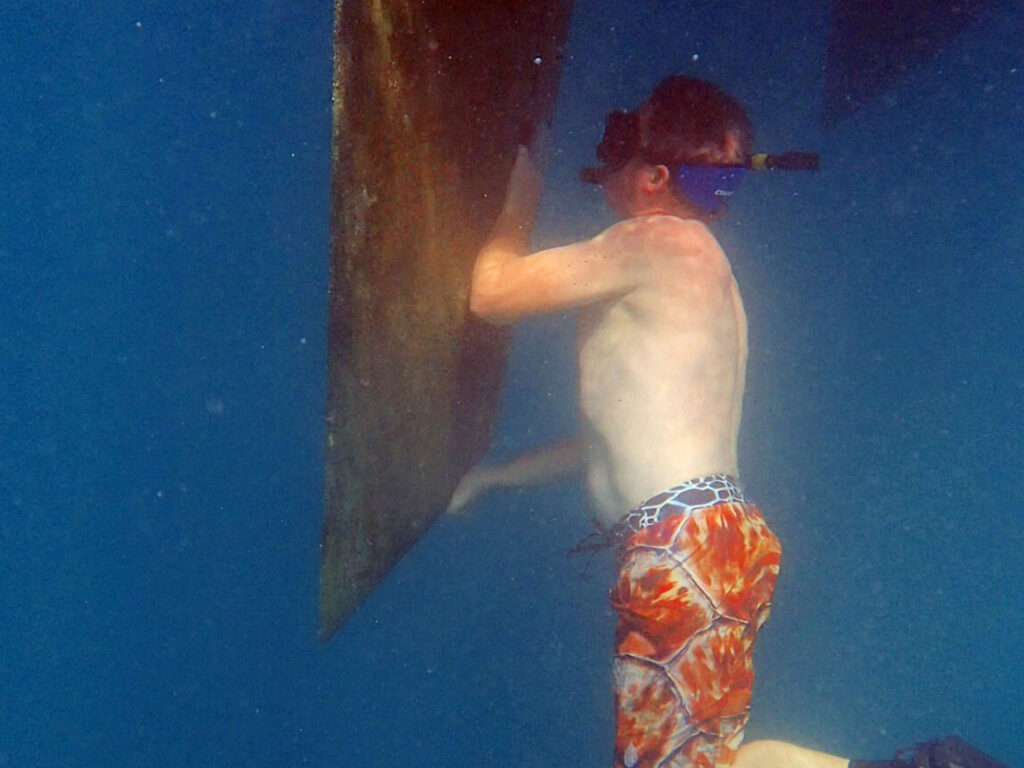
The Source of the Clunk
Nearly 5,000 nm have passed under Totem’s keel since splashing last December. This sound did not occur across that time period. So, why now? What changed?
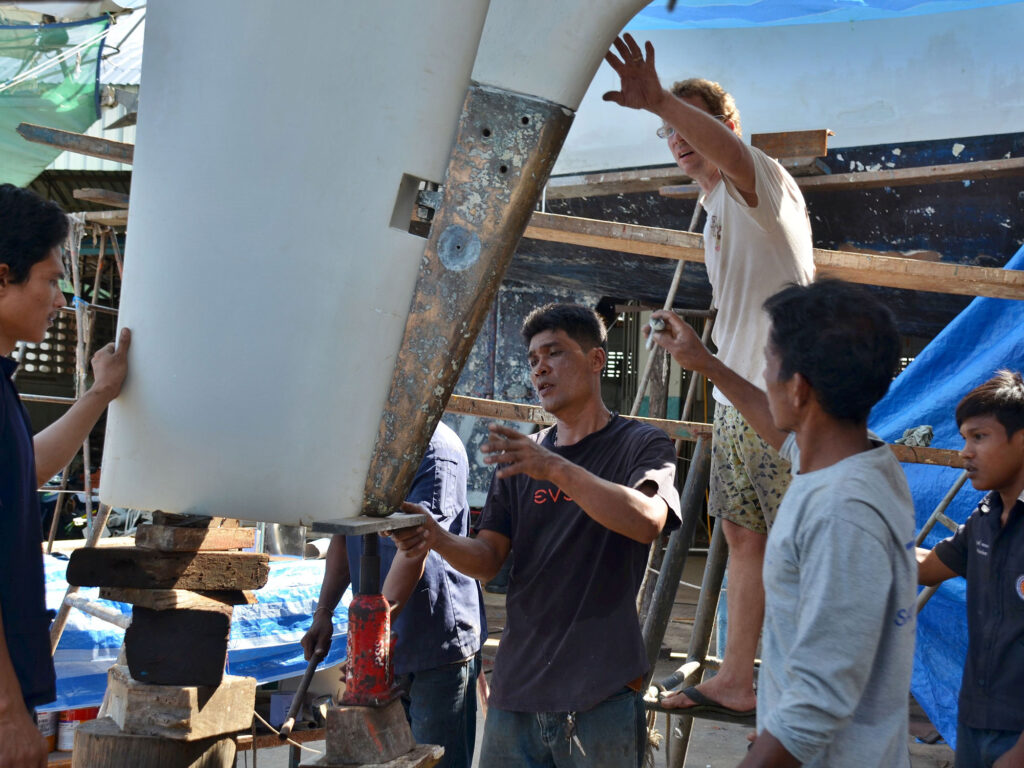
Chief among Jamie’s concerns, despite the good initial inspection, was the construction of the rudder post. If the rudder post was one long rode section linking in the skeg at the bottom, then we had a problem. The excess play wouldn’t have been possible unless internal metal structure was coming apart. We spent hours poring over photos of the rudder and skeg, mainly from when they were removed in Thailand for inspection. That was a project, in Thailand, with somewhat dramatic fashion.
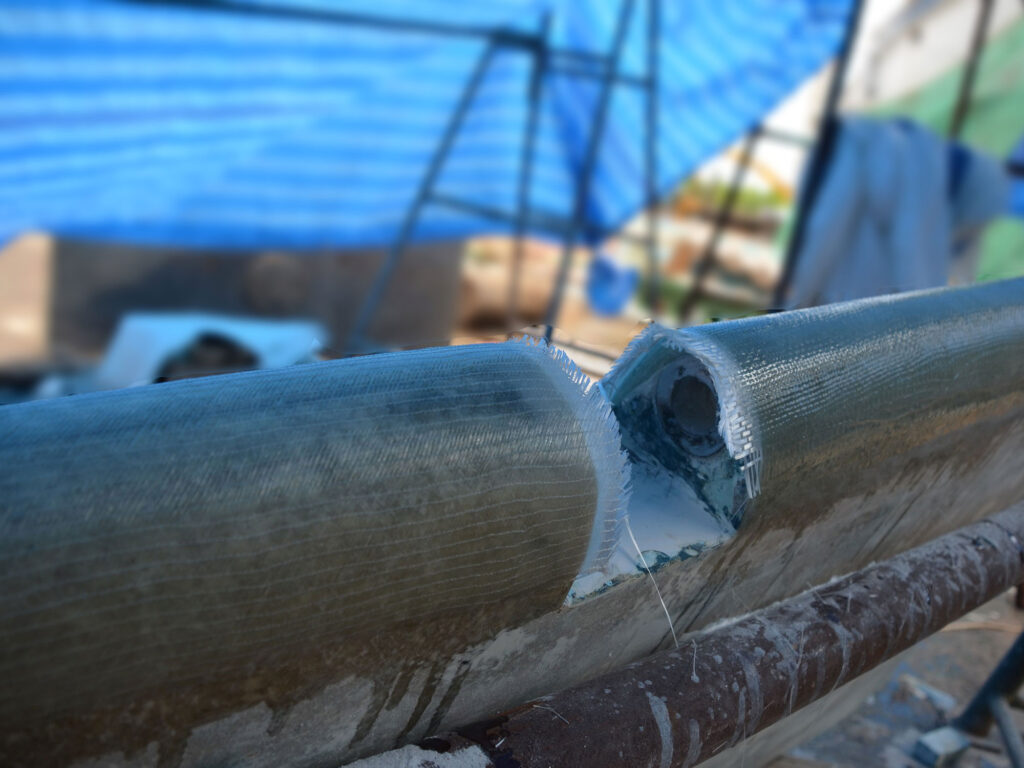
Photos showed what memory had forgotten: that the rudder post didn’t exit through the lower bearing. Instead a short stainless post, a pintle, meant the play was okay and not a sign of internal problems. We suspect Totem’s very DDW point of sail, which put multiple directional forces on the rudder compared to other points of sail, pushed and shoved the rudder around, making the clunk sound. We communicated findings back to the F&WS team and to the JRCC Honolulu, who at this time were looping in folks from the US Air Force and applying pressure for us move along as soon as possible.
Johnston Atoll: Wild, Mysterious
If we had to assign a single word to Johnston Atoll, it would be “creepy.” (Not how one typically describes a remote tropical island!) Reading the atoll’s history may be exciting for some, but the legacy is sobering. Bunkers scattered around islets, concrete bulkheads around all the land we could see, a concrete block of a building we assume is where chemical weapons were incinerated, and not a sign of living human presence.
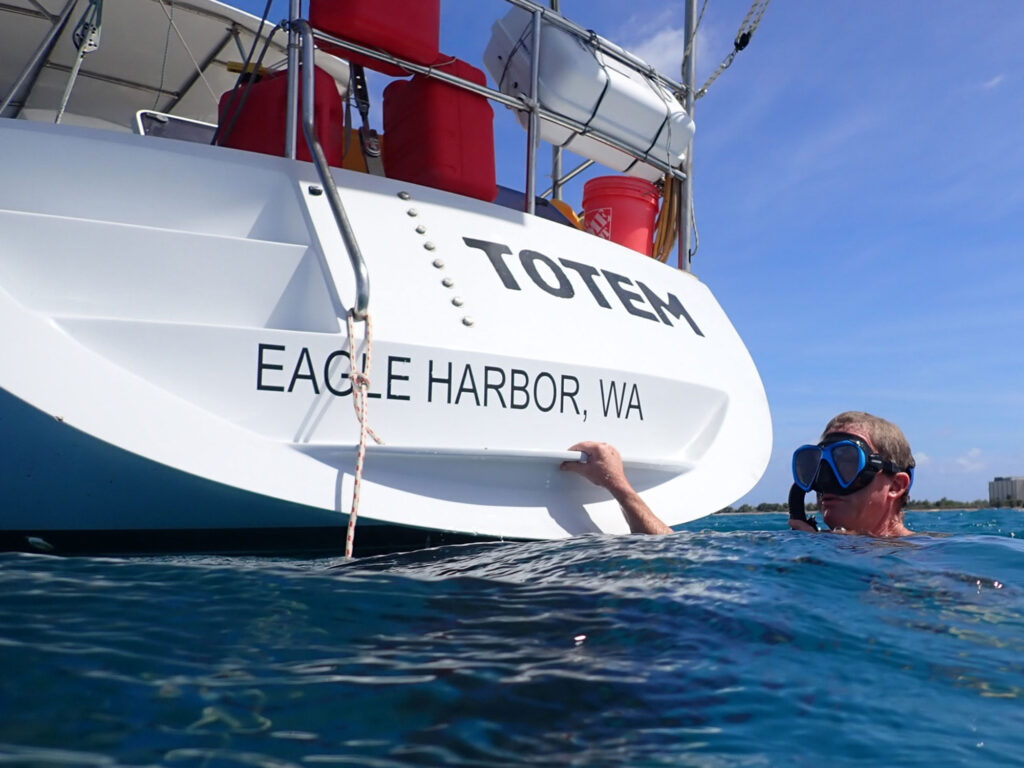
The cacophony of seabirds, which seemed to occupy every scrap of land, counterbalanced the darkly morbid shadows cast by the military legacy. The boobies, especially, provided some entertainment as they perched fearlessly near us around Totem.
The terms of our stay were very clear: There was to be no exploring. We were prohibited from going ashore, and we could not swim—other than what was required immediately adjacent to Totem to inspect the rudder. No problem! Yet, while we did not go to the wildlife, the wildlife (or the birds, at least—marine life was minimal) came to us. At any moment, as many as a dozen boobies sat happily pooping away on our solar panels. (Another aerial assault at Johnston Atoll perhaps?) They gathered on our bow pulpit in groups of five, and even hung off the snubber line, watching our every move.
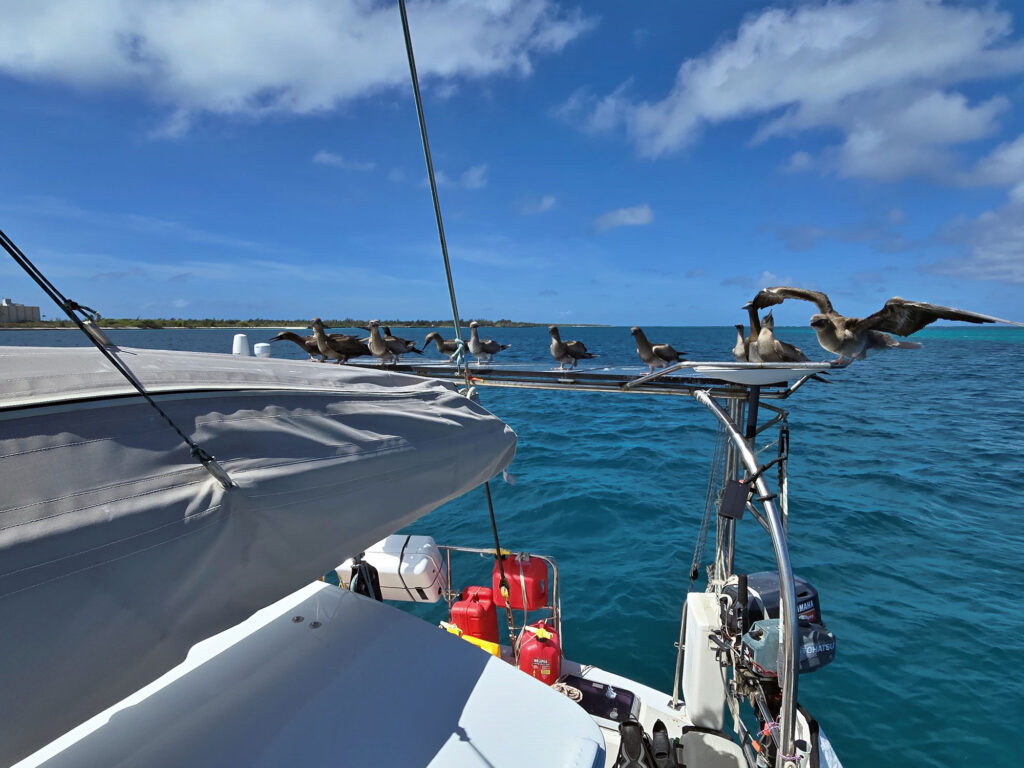
The sheer density of birds offered a reminder of just how important it was to restrict our movement, to prevent anything we might inadvertently bring to their delicate environment. The red-tailed tropicbird population was devastated here after ants (ants?) infested their nesting grounds. How easy is it for ships to introduce a pest? It was no problem for us to remain happily aboard our floating island, Totem, simply grateful to be here and find resolution. (For more about the crazy ants (yes, that’s what they’re called), check out this article from F&WS on the many years required to address their threat. Also, click over to this beautifully photographed article from the Audubon society).
Departing Johnston Atoll
Getting away was the next trick. (Ideally, we’d have departed immediately!) I was keen to arrive in Majuro for a multi-day festival the following week, during a public holiday, Manit Day, that celebrates Marshallese culture. If we carried on right away, we might still have made a day or two of the festivities.
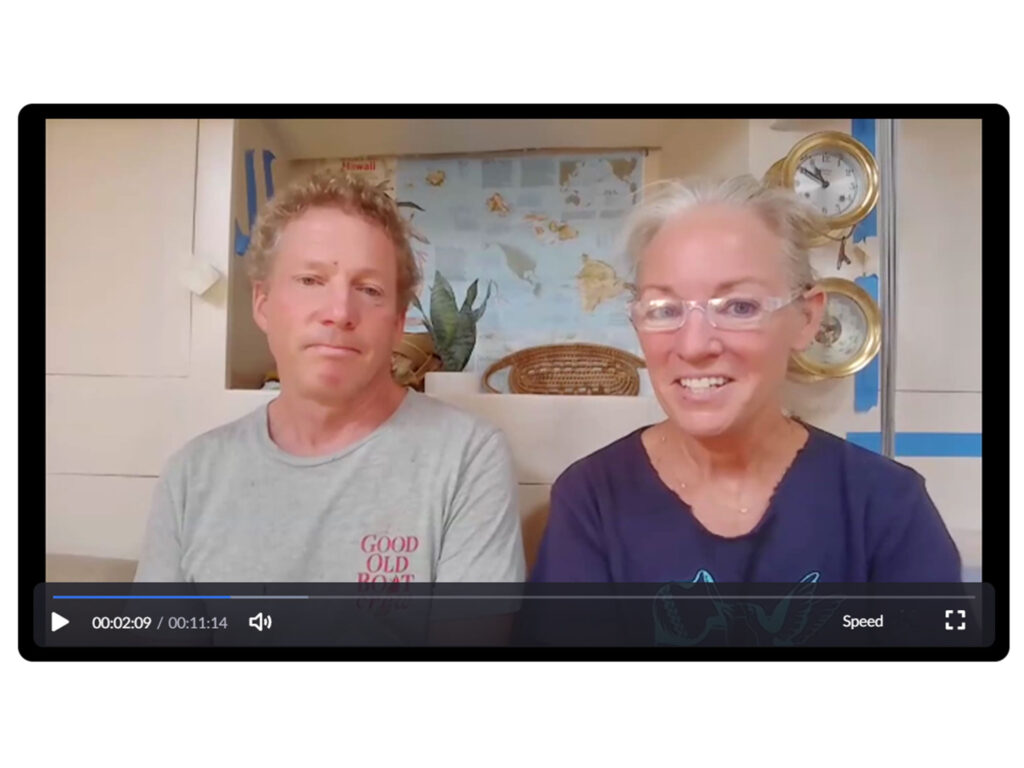
Unfortunately, the weather for departing was, in a word, unsettled. After watching mostly benign conditions in this part of the Pacific for the month prior to leaving Hawai’i, volatile conditions from the ITCZ moved tropical waves toward our location and threatened to spin up into more severe weather.
We wanted to get away. We definitely didn’t want to be in a system turning cyclonic with 45 knot winds and potential stronger microbursts. We put this short video together to illustrate. Weather watchers might learn from how Jamie’s reviewing a combination of wind, rain and satellite imagery to determine when we could safely carry on. Friends and followers may understand the personal relating of this wild experience.
Next Stop: Majuro
We departed again the morning of September 19th, literally watching at anchor for the winds from a nearby system to move past our location and open up a safe window for us to carry on. We’ll miss the festival in Majuro, but we’ve regained confidence in our rudder.
Want to follow along?
Totem’s PredictWind tracking page includes data about current weather conditions. Noforeignland users can see our circumnav track here.
Join us at the Annapolis Boat Show in October
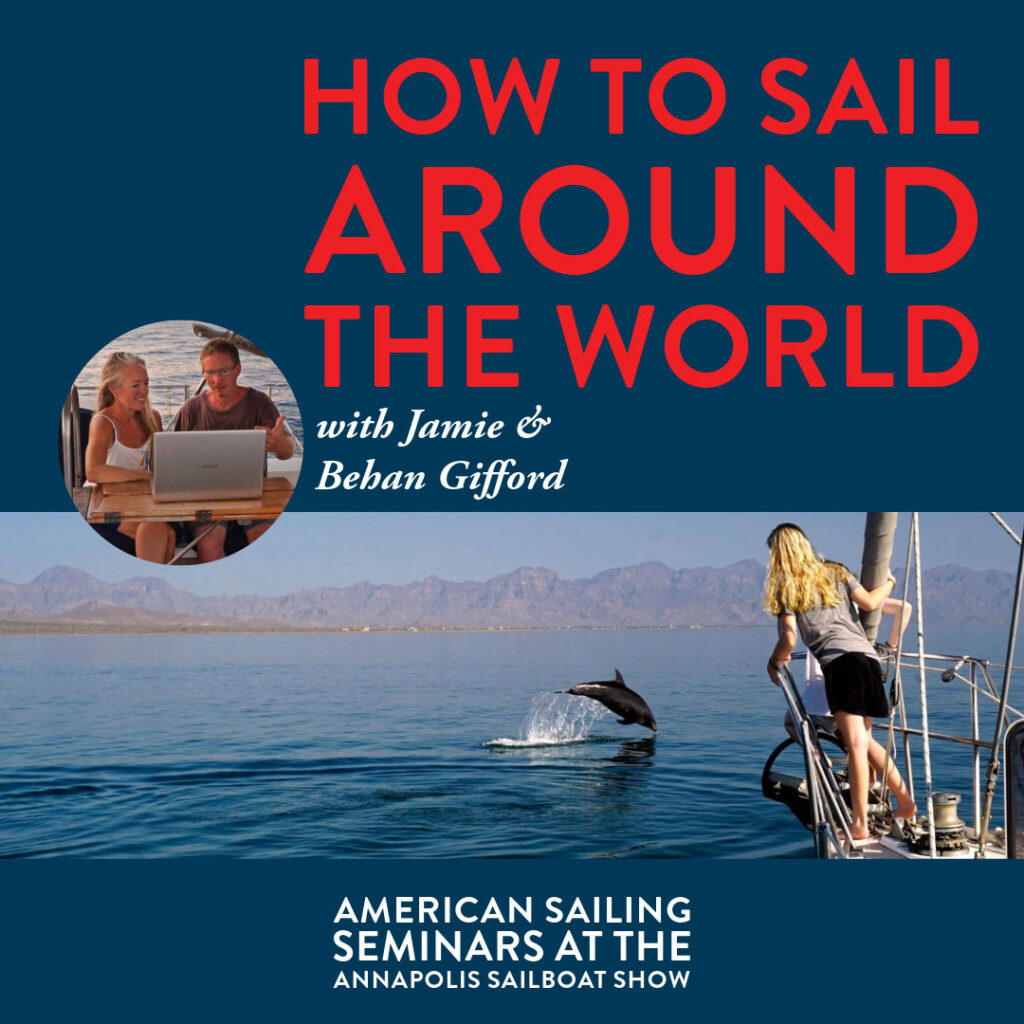
We’ll be flying from Majuro to Annapolis for the annual sailboat show. Our departure will be only days after we make landfall. Hopefully, the 30ish hours of travel will feel like a cakewalk after this passage. Meanwhile, we’re excited to be teaching a range of courses, details below. Please join us if you’re coming to the show. Note: Pre-registration is required, and seats are limited. (At least one course is already sold out.)
American Sailing Association seminar, Oct. 11
How to Sail Around the World: No boat show ticket required to join our afternoon, half-day seminar with the ASA. Insights, inspiration, and the toolkit you need to plan your own successful, long-distance cruising adventures.
Cruisers University seminars, Oct. 7-10
- Becoming a Cruiser: Together, we break down the massive project which is “how to go cruising.” Think of this as the best of our coaching work condensed into a packed day to get you launched and comfortably on your way.
- Sail Inventory and Care: Jamie gets hands-on with sails! Practical information to care for (and save money with) your boat’s sails
- She’s a Cruiser (Master Class): Behan presents in collaboration with two other cruisers, Nica Waters and Liz Shaw, this program is just for women, with concrete actions and intangible essentials. Guest speakers lending their wisdom include Lin Pardey, Sheryl Shard, Mia Karlsson, Sophie Darsy, and Hilary Howes
- Basics of Fiberglass Repair: Jamie will detail materials, basics of fiberglass work every cruiser should know, demonstrate live, and let you get hands on to try the methods and mixing as well. (this class is now sold out)
- Route Planning: careful route planning leads to safe and comfortable passages: learn the tools and method from Jamie!
- Safety at Sea: Jamie uses examples and tools to help you avoid being an UNsafe boat
Take the Wheel, Oct 11-13
This flagship Annapolis Boat Show program is divided between a morning in the classroom and an afternoon on the water. We lead the classroom portion, and discuss sailboat design (features, tradeoffs, and bluewater myths), purchase process, how to maximize your boating pleasure, and budget planning for setting sail.








